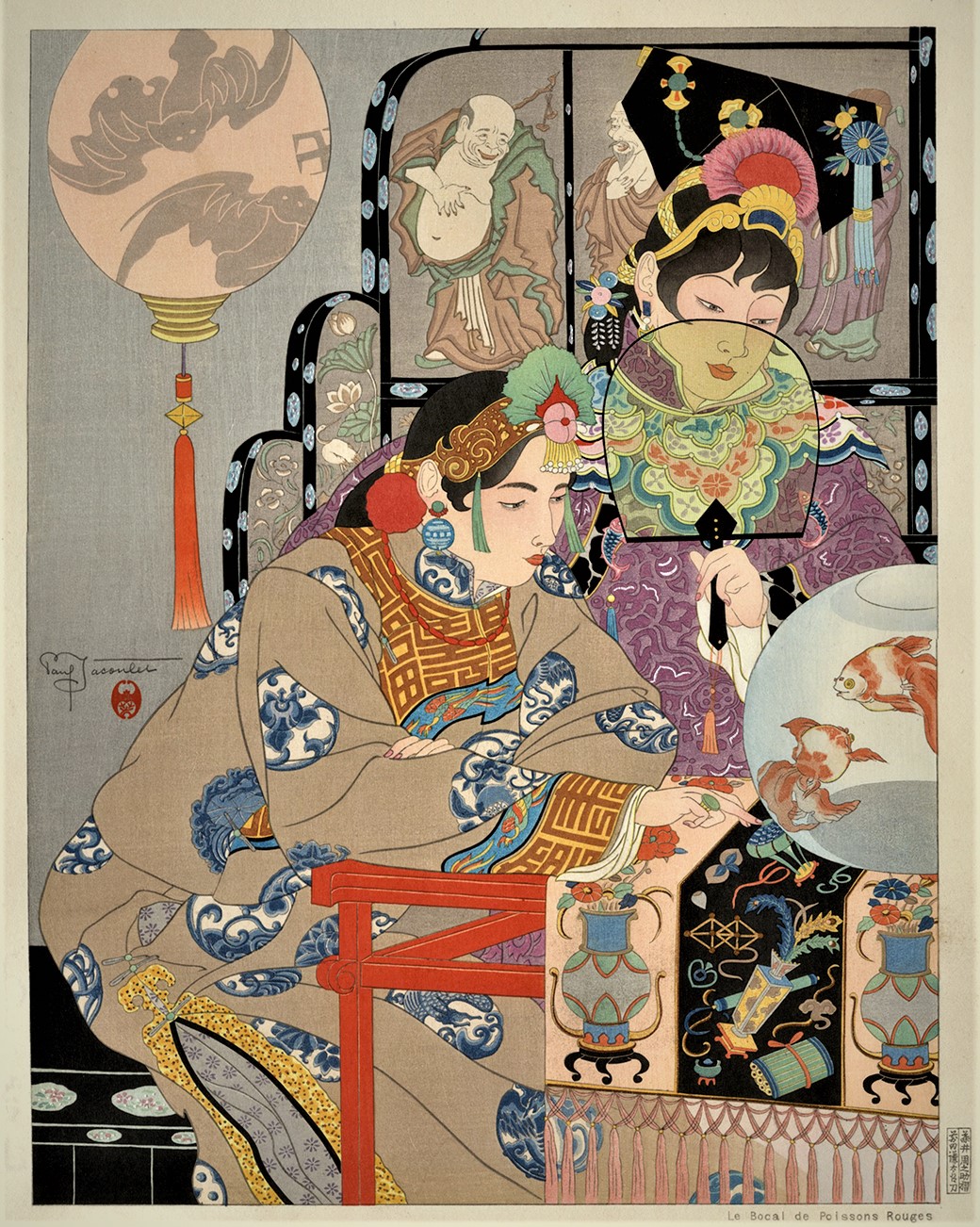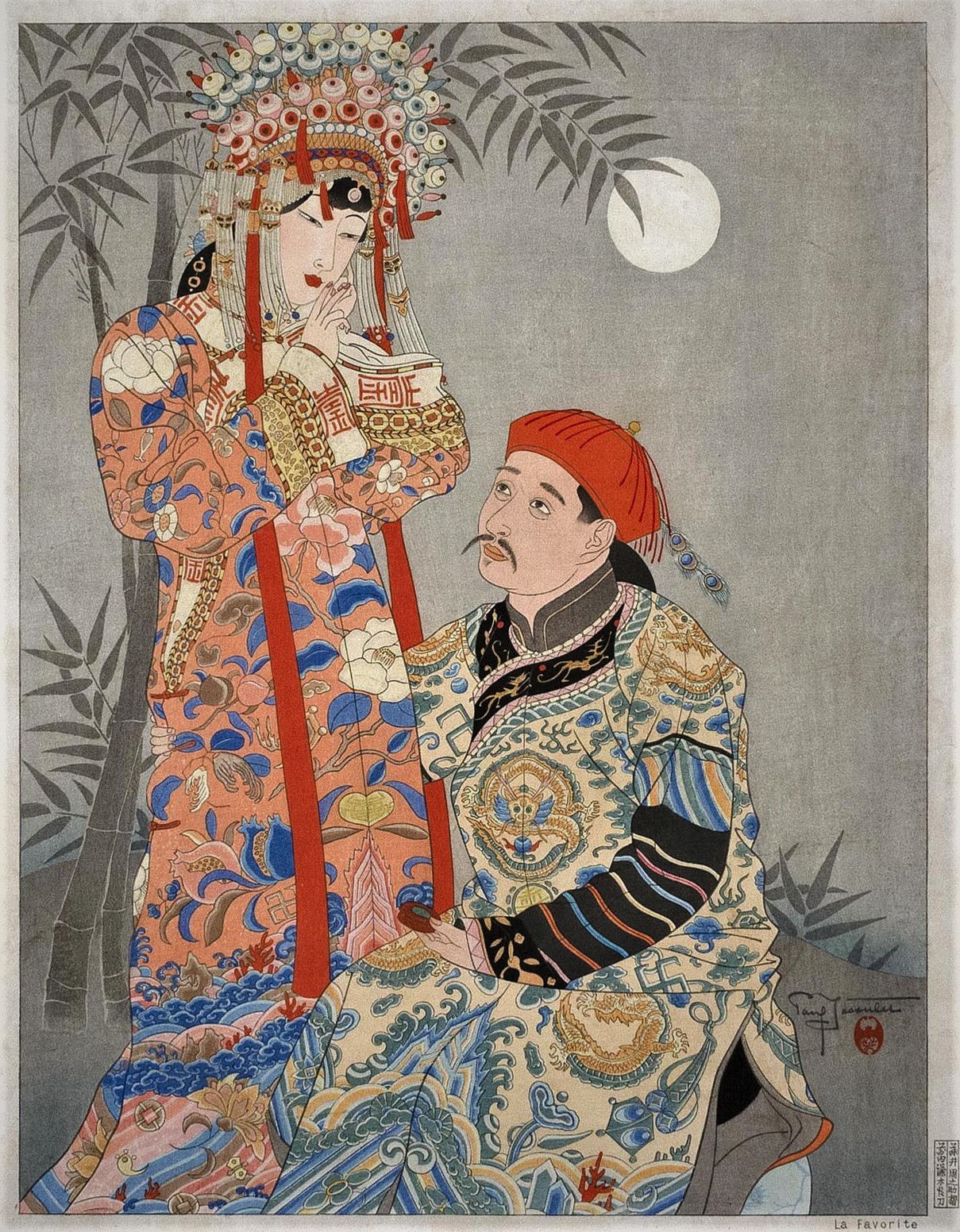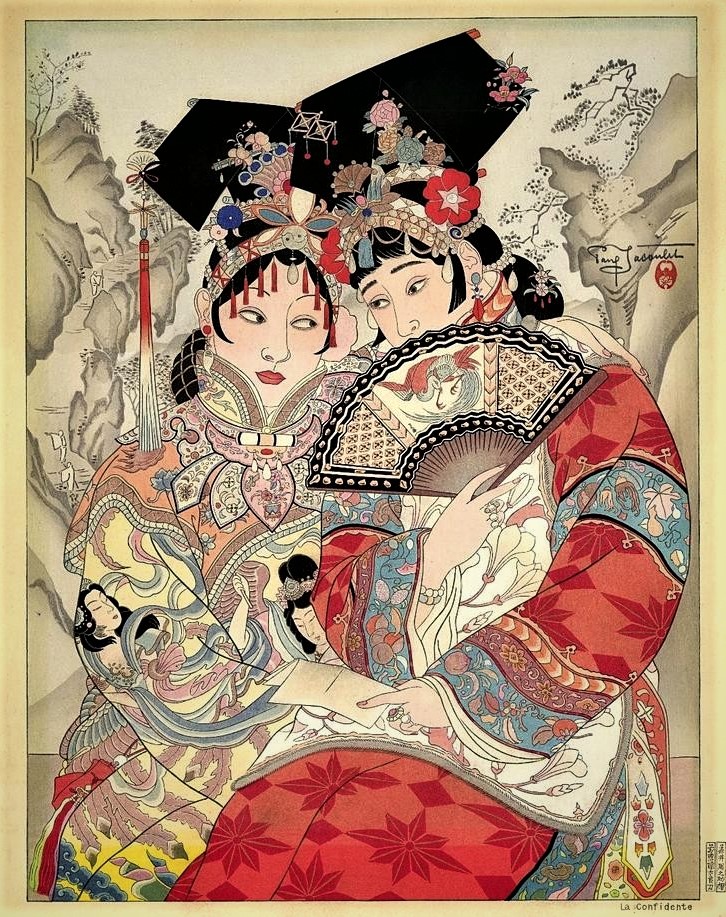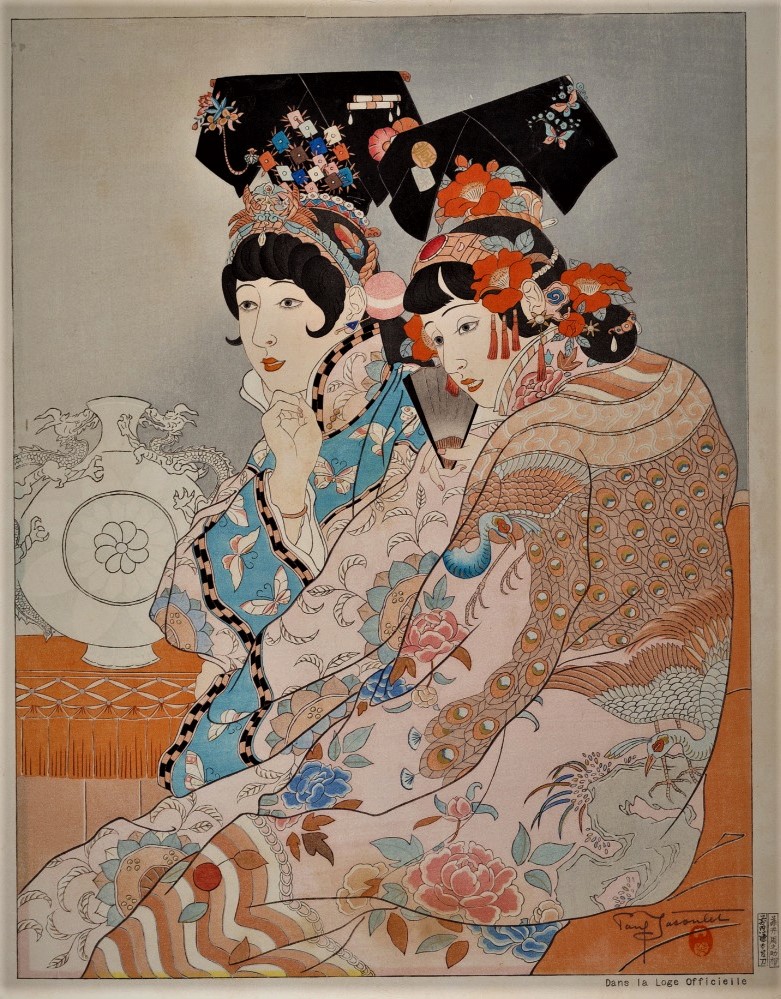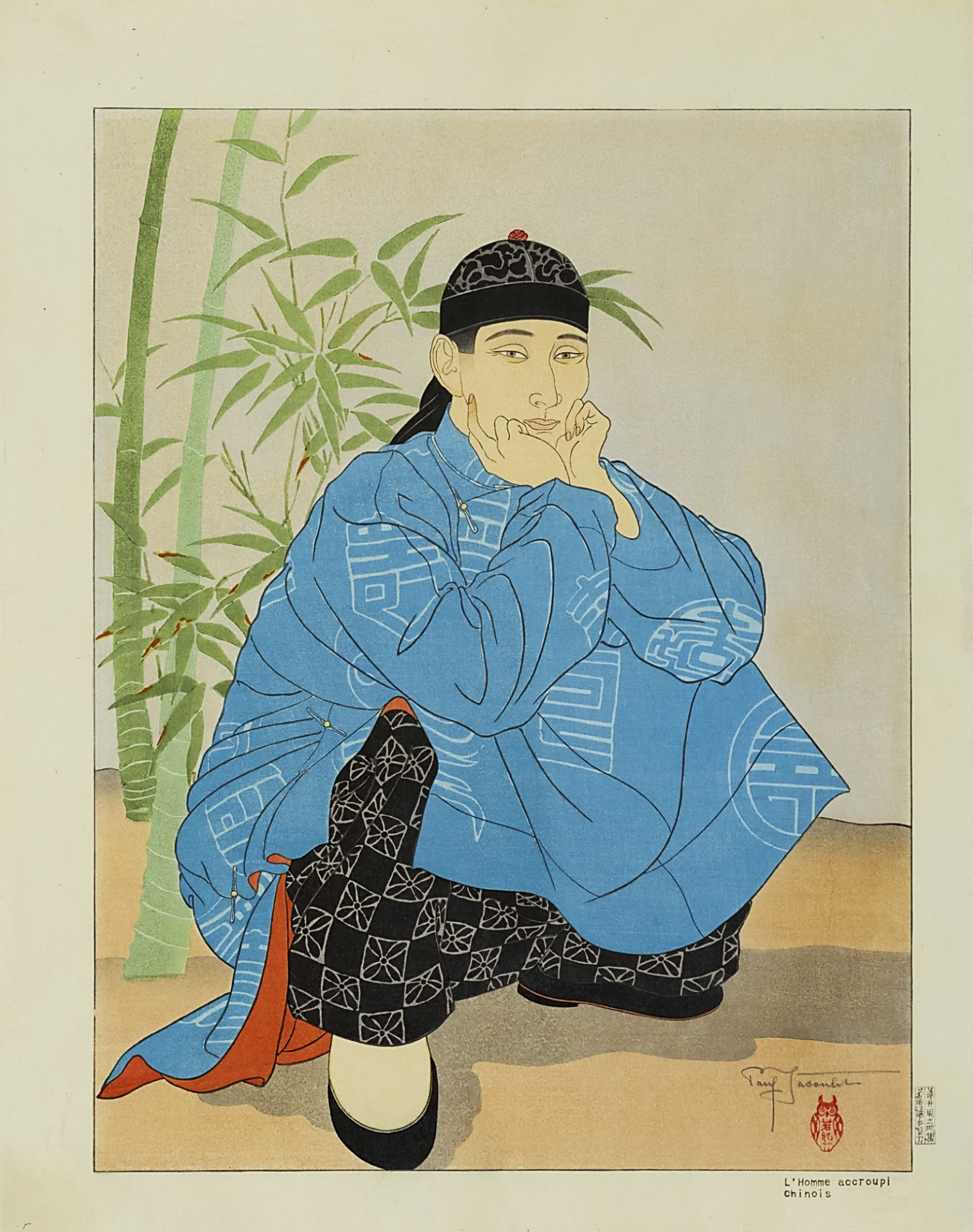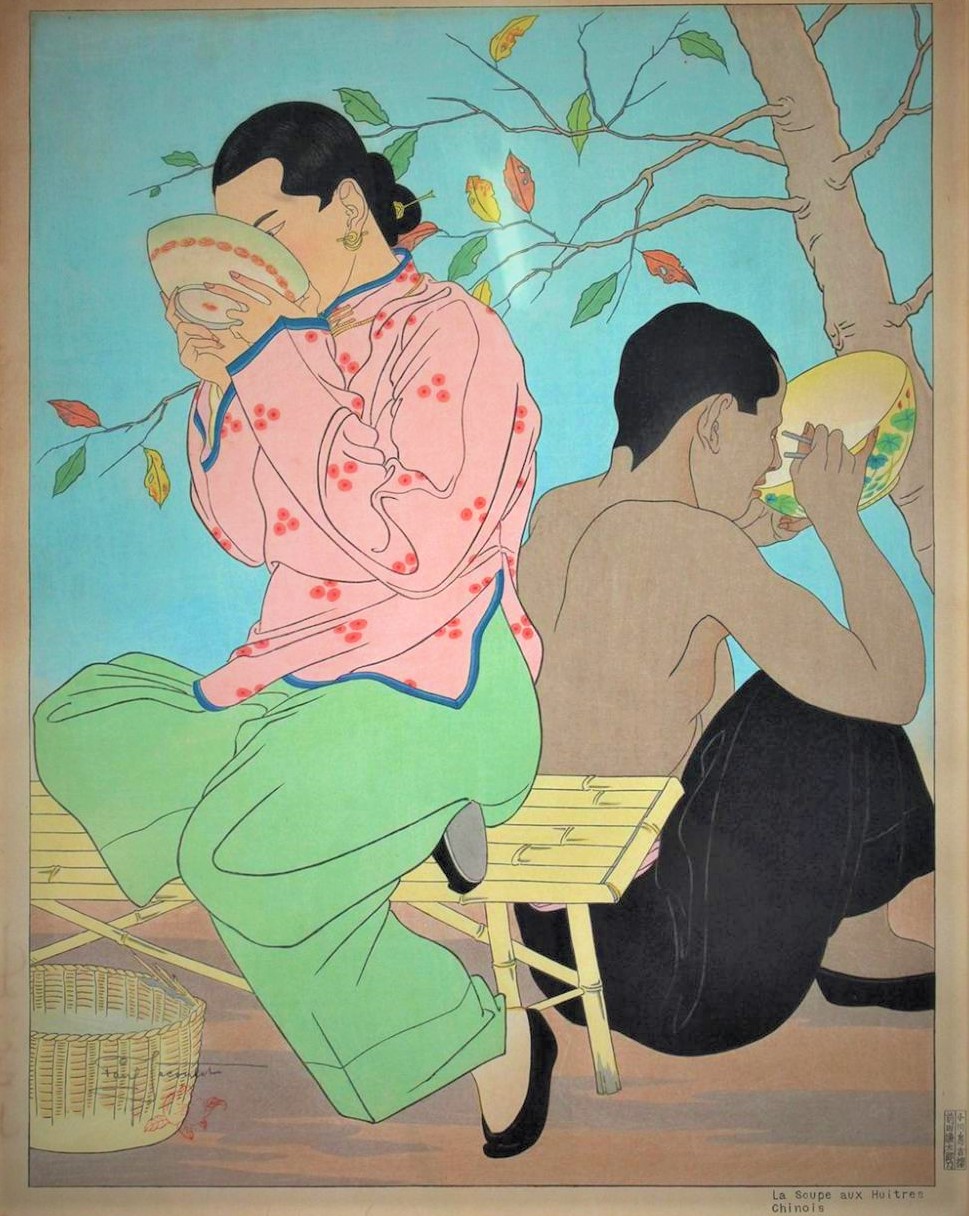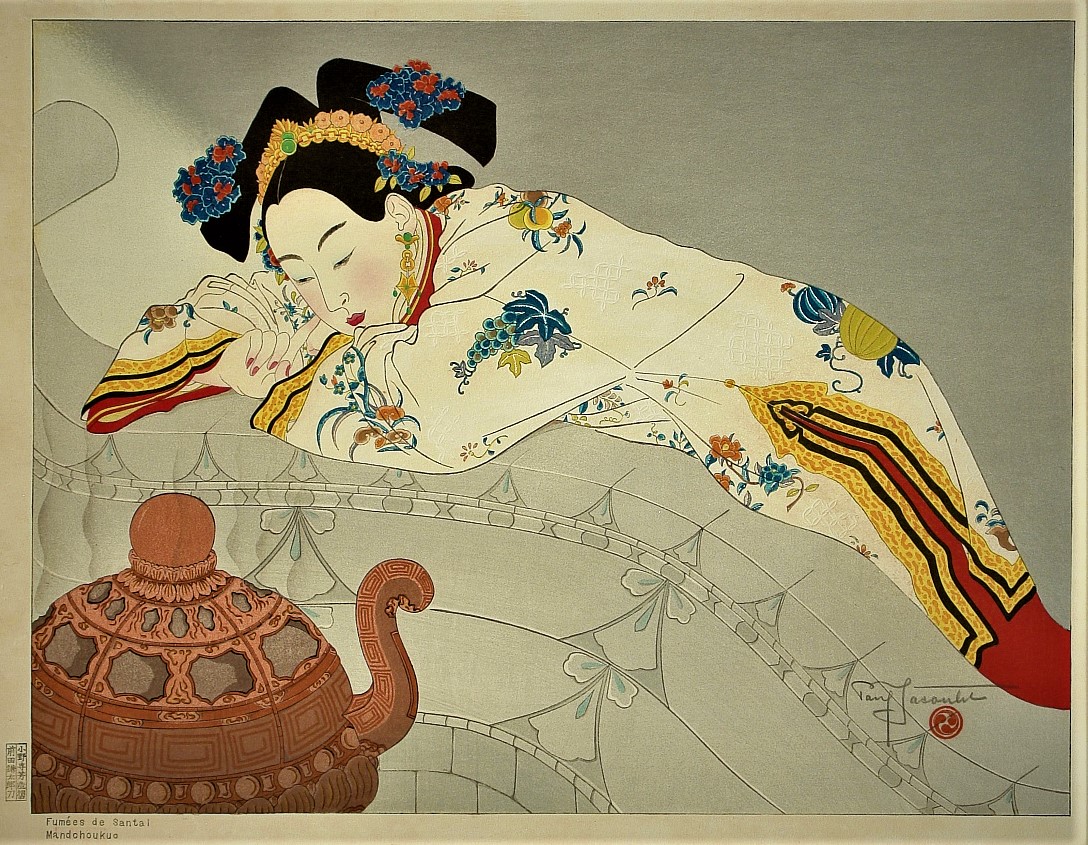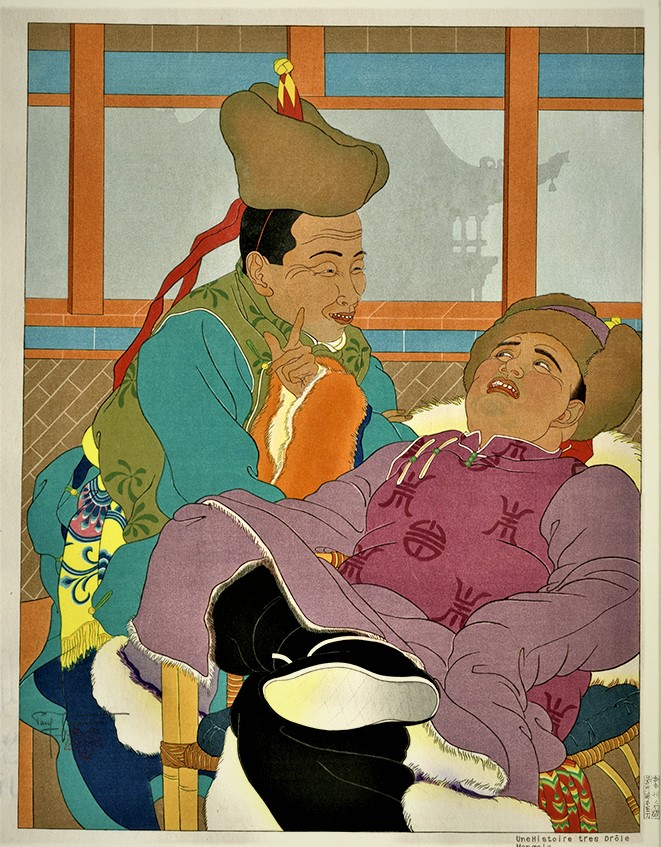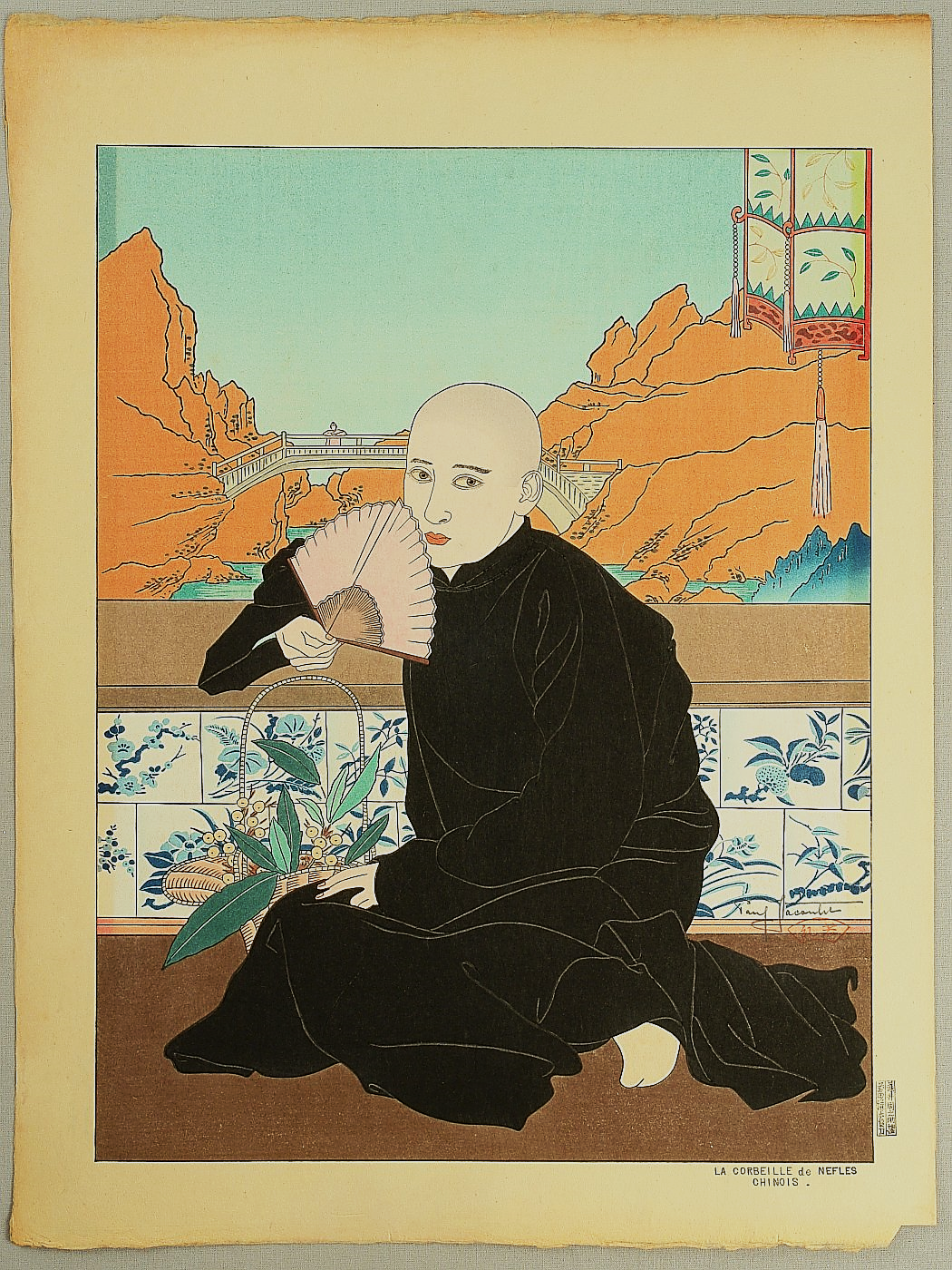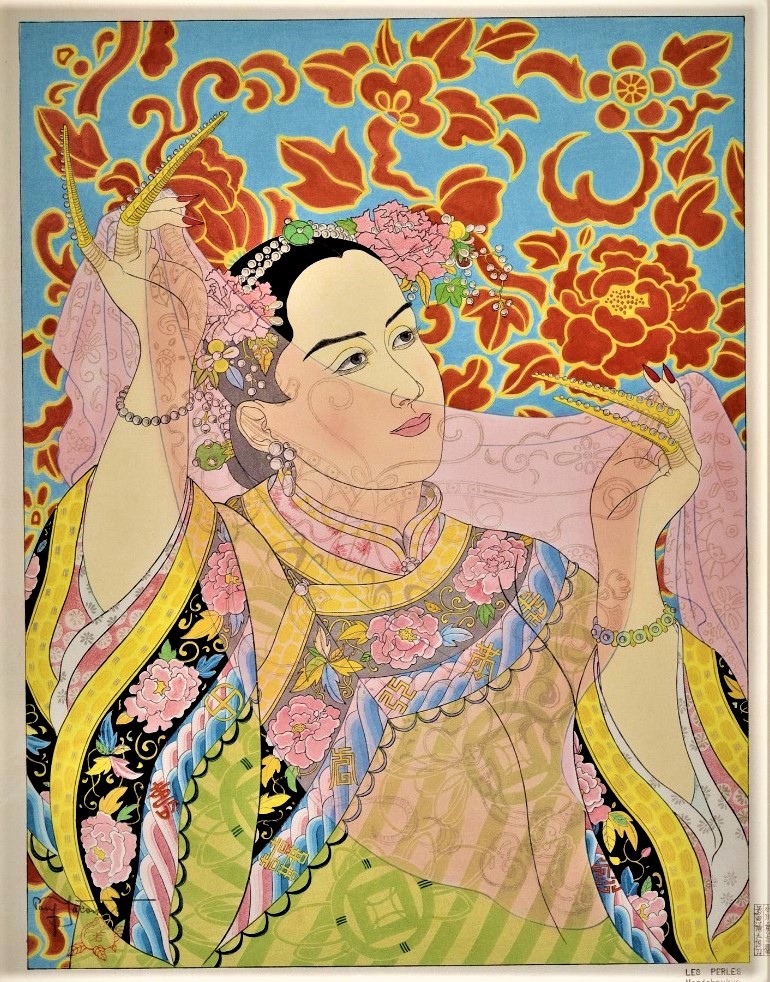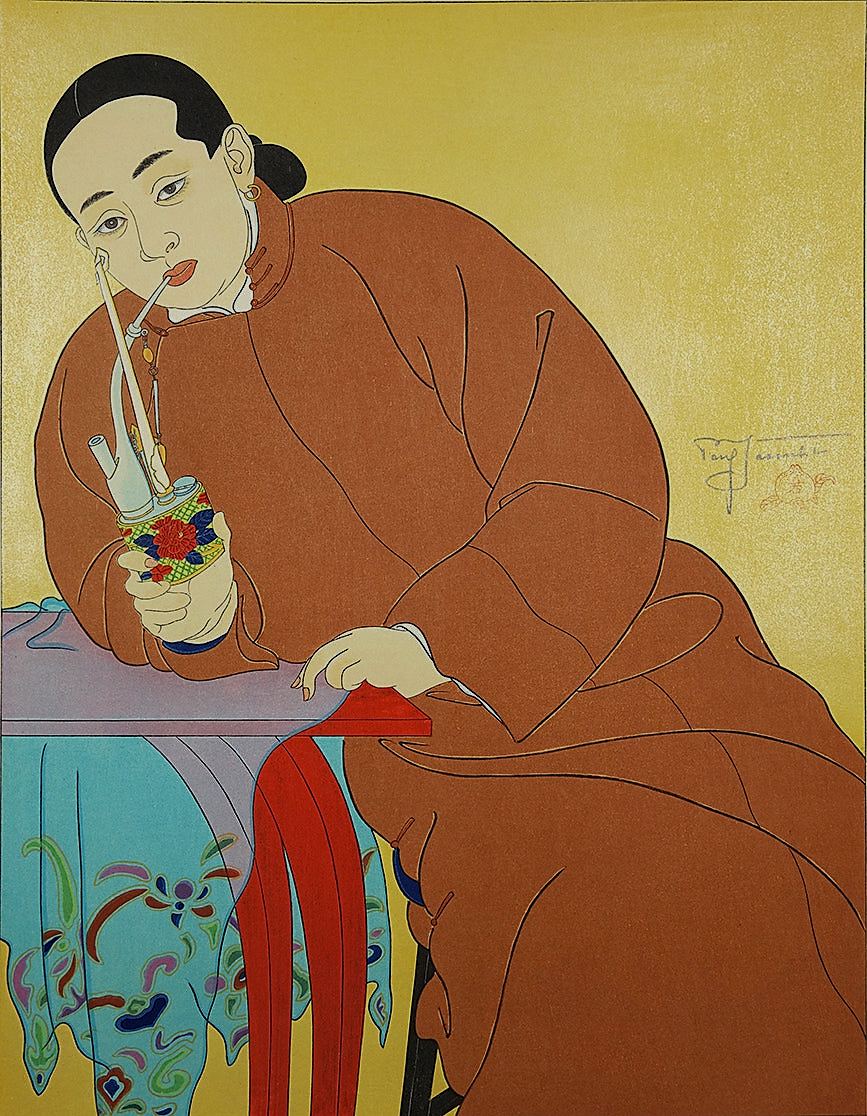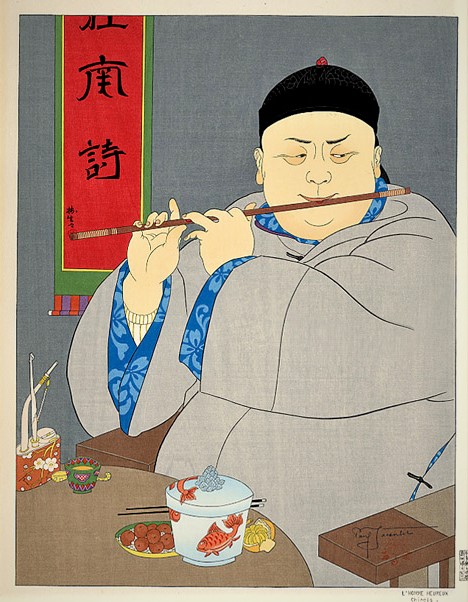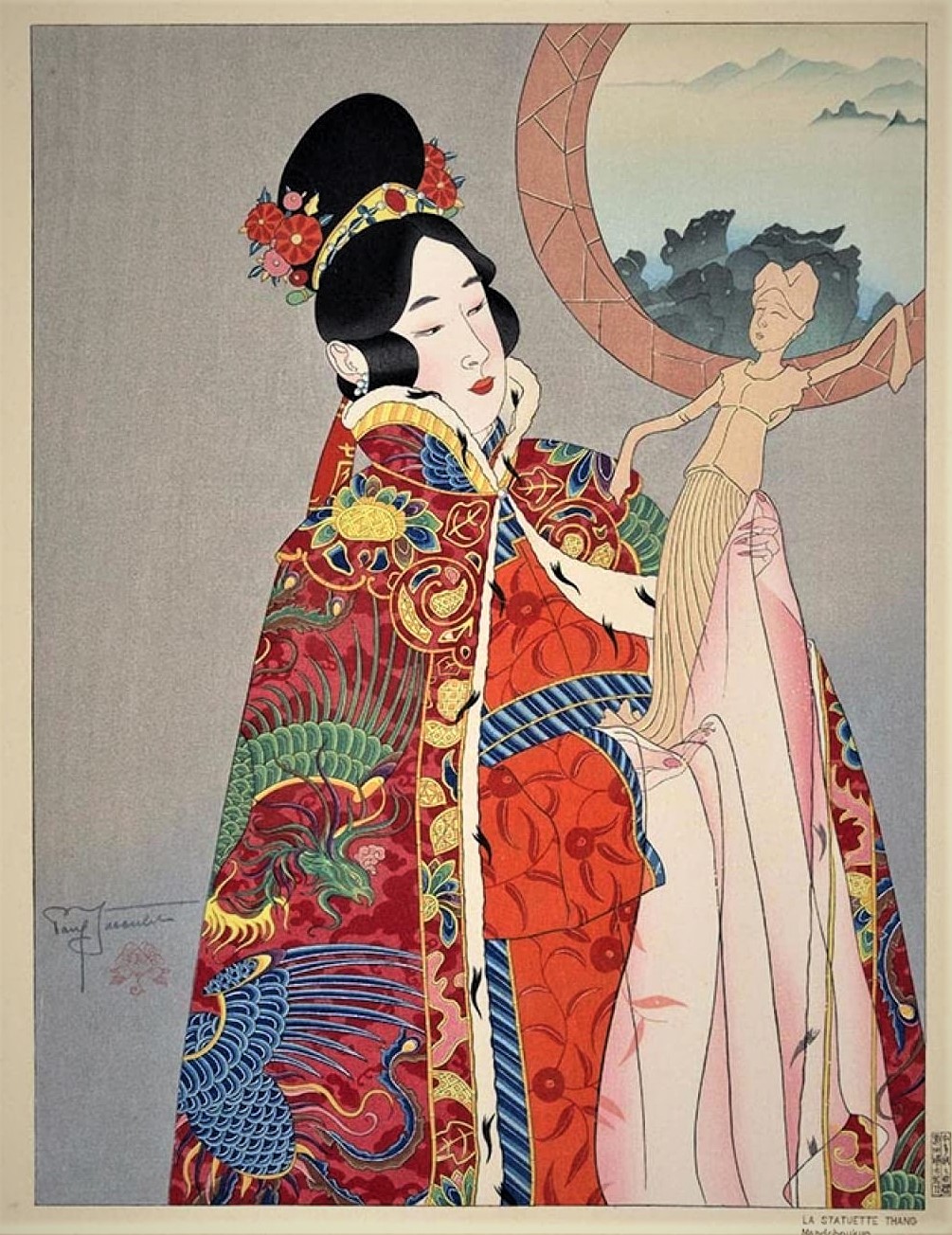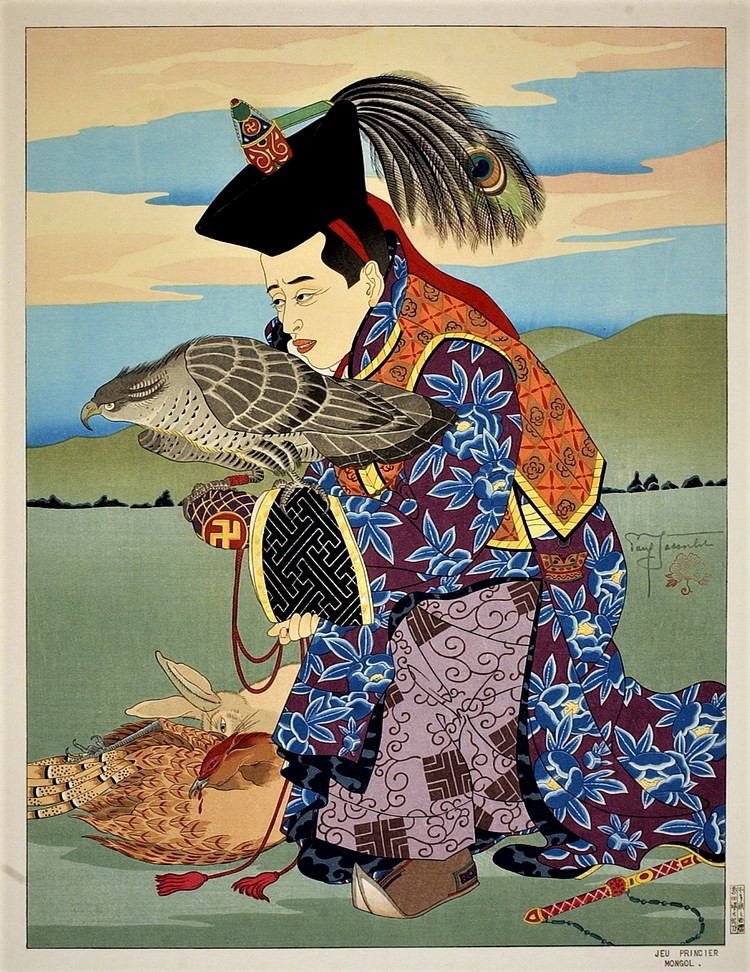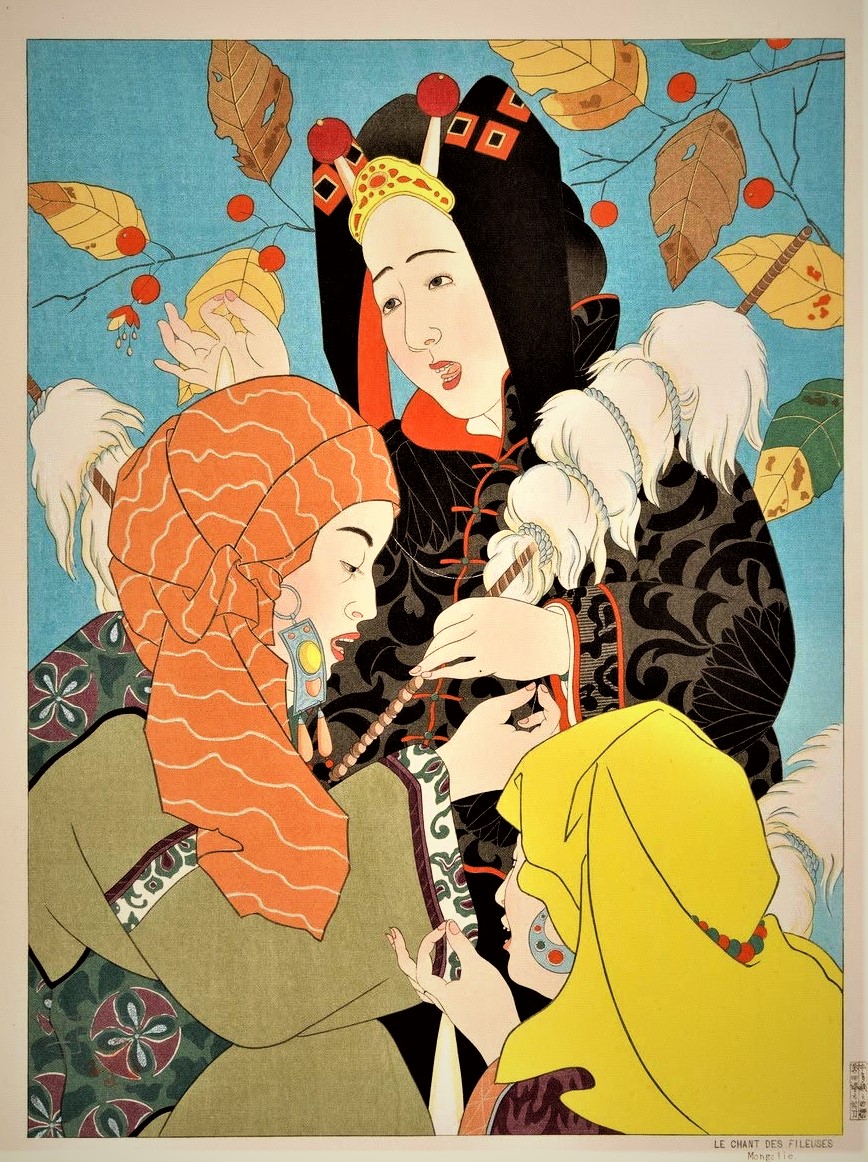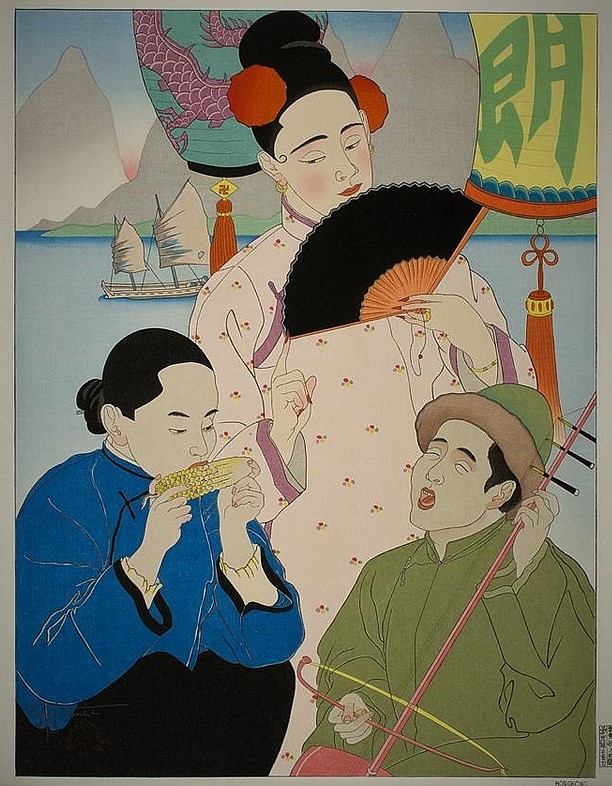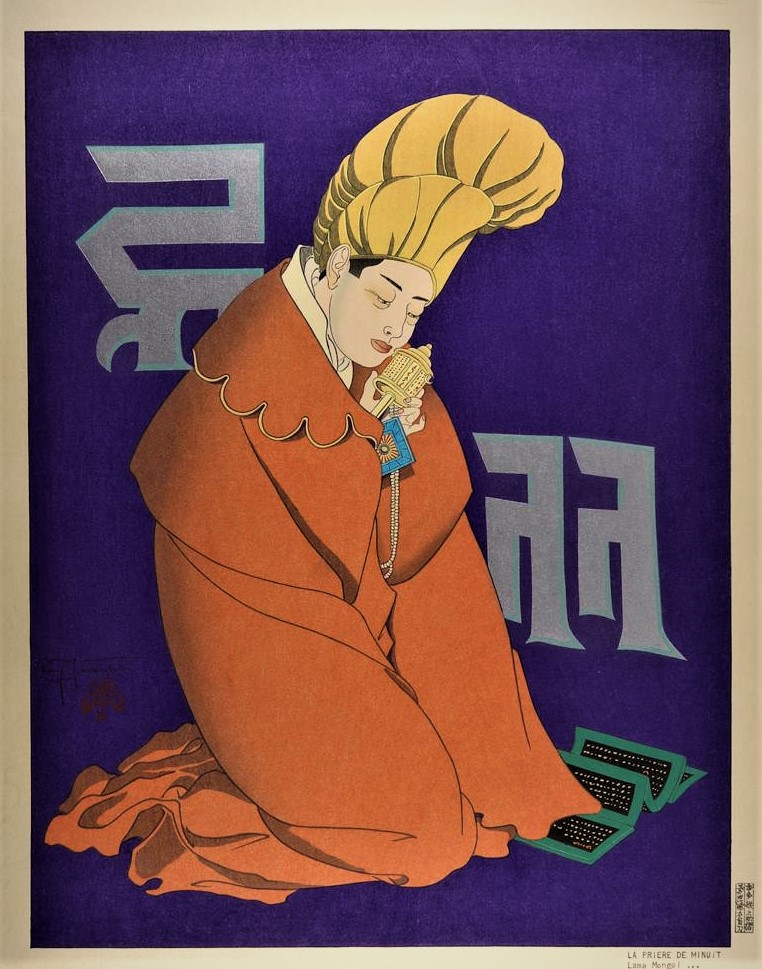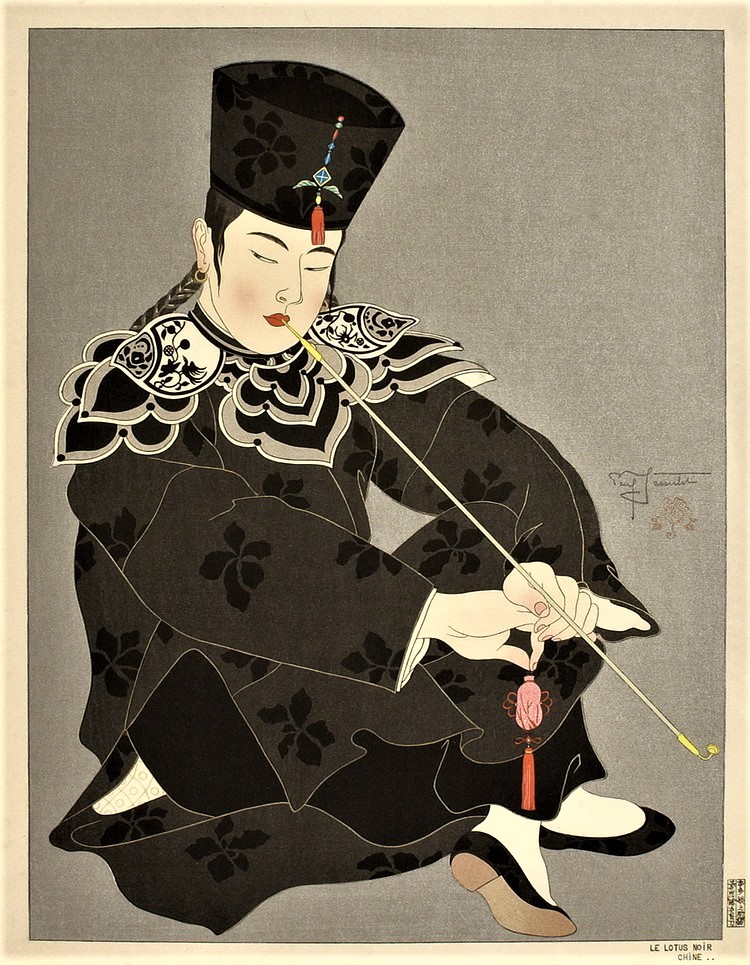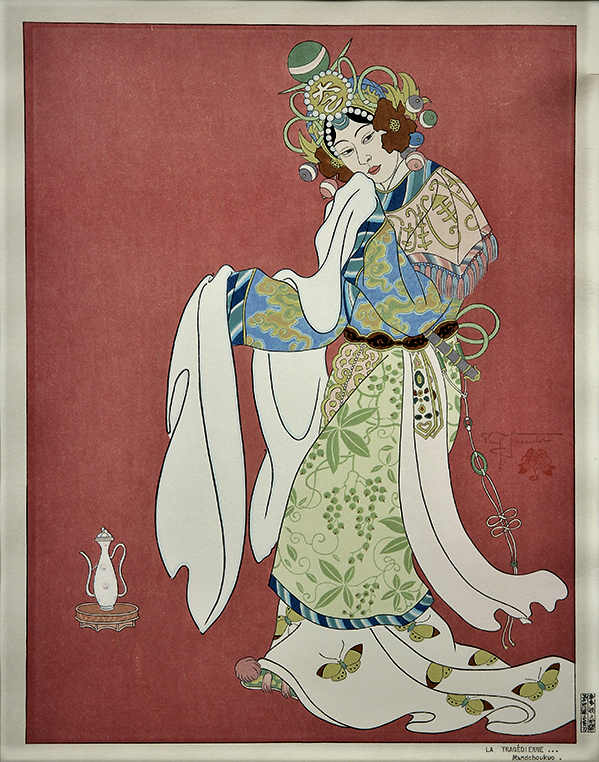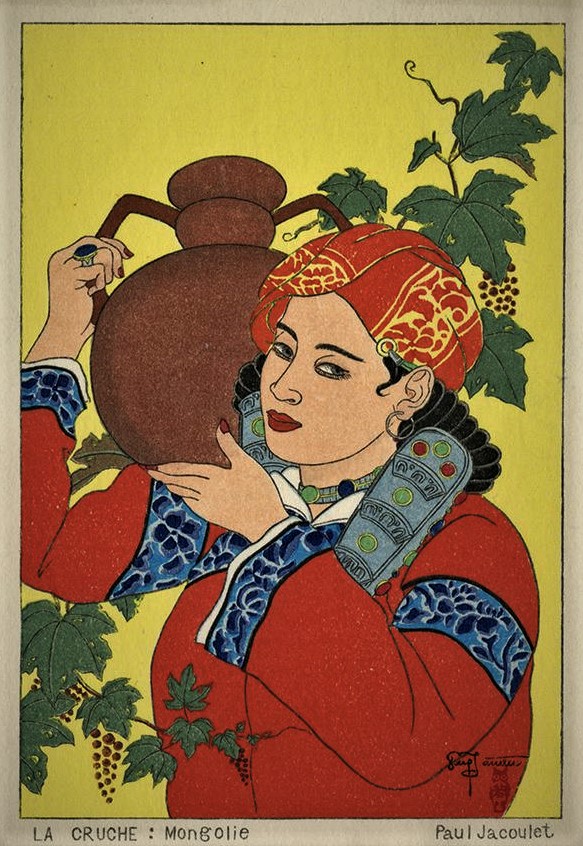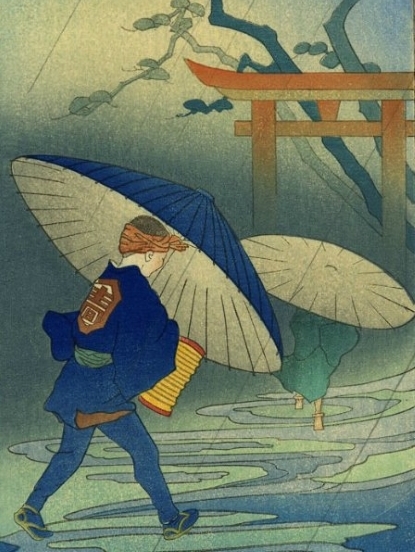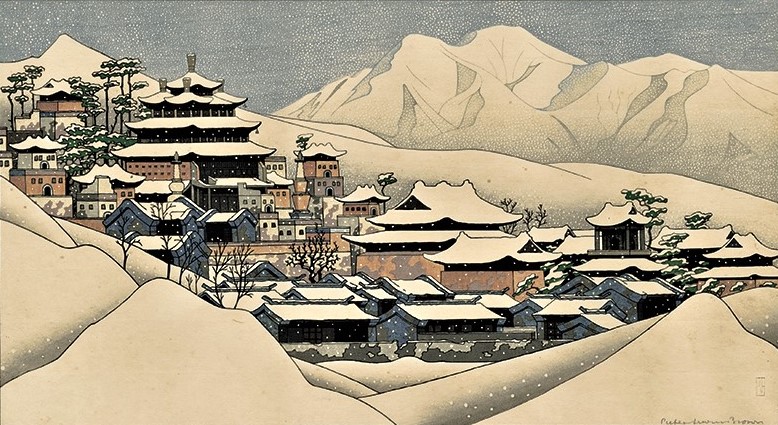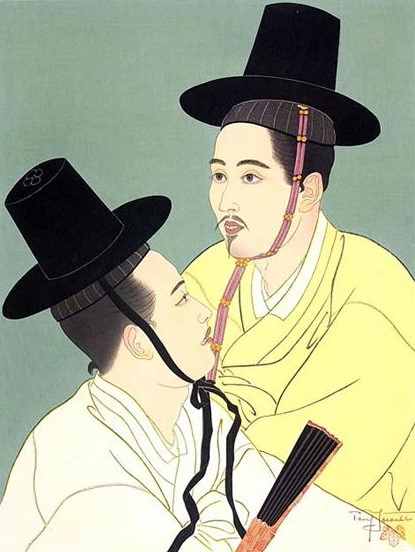PAUL JACOULET AND CHINA
Paul Jacoulet did not make long stays in China, whereas he traveled many times to Japan, Korea and the Pacific. Leaving from Seoul where his mother lived, he nevertheless offered himself several incursions. He stayed there in particular in May 1934, accompanying to Manchuria the Belgian Baron Marcel Baeyans who was a director of the Compagnie Internationale des Wagons-lits. Perhaps he went as far as Mongolia since eight of his prints have this country as their setting. He made also a brief stay in Hong Kong in 1954.
With twenty-six prints, however, China occupies an important and continuous place in his work : Les Marionnettes chinoises is one of his first prints (1935) and La tragédienne the very last, signed in January 1960, two months before his death. He does not stray into the myths and legends dear to Bertha Lum and does not paint the sumptuous buildings of Beijing like Katharine Jowett or street scenes like Elizabeth Keith. He is a portrait painter : the China painted by Jacoulet is always a magnified picture of Chinese society in the first half of the 20th century and we meet there both sophisticated Manchurian princesses as well as characters who sometimes seem to have come out of the Lotus bleu of Hergé.
Many of his "Chinese" prints are titled Mandchoukuo. Manchuria indeed had come under Japanese control in 1931 with the ephemeral creation of a state where, until 1945, the last Manchurian emperor Pu Yi reigned fictitiously. Paul Jacoulet has always kept away from politics and he has never issued the slightest public judgment on the actions of the Japanese empire, whether in China, Korea or the Pacific Islands. But the portraits he has given us are strong manifestos for the identity of these countries to be preserved and the personality of their inhabitants to be respected.
As for all the Japanese, the art and culture of China exerted a real fascination on Jacoulet : there dominates the vision of an imperial Beauty, dazzling in Les jades, Les perles or Le lotus noir and more again in the exceptional series of Princesses mandchoues, five prints made in 1942 and which punctuate the first period of his artistic production that the war suspended for a long time. Jacoulet reaches here the pinnacle of his art, through the complexity of the composition, the precision of the details, the magnificence and diversity of the colours and of precious ingredients – mica, embossing, gold and silver powders – and the technicality of engraving and printing pushed to the extreme.
But also bursts in his works the description of a traditional Chinese society, of great simplicity, artisanal and popular, with portraits of characters with a nostalgic gaze and whose beauty shaped by the artist ensures eternity.
The writer Victor Segalen had the same faith in Beauty, "a completely aesthetic Faith, an exclusive search for Beauty, a permanent desire to tend everywhere to Beauty, to realize a reflection of it in his thoughts, in his actions, especially in his works – and this without ever claiming to embrace, nor determine, nor fix Beauty”.
The collection
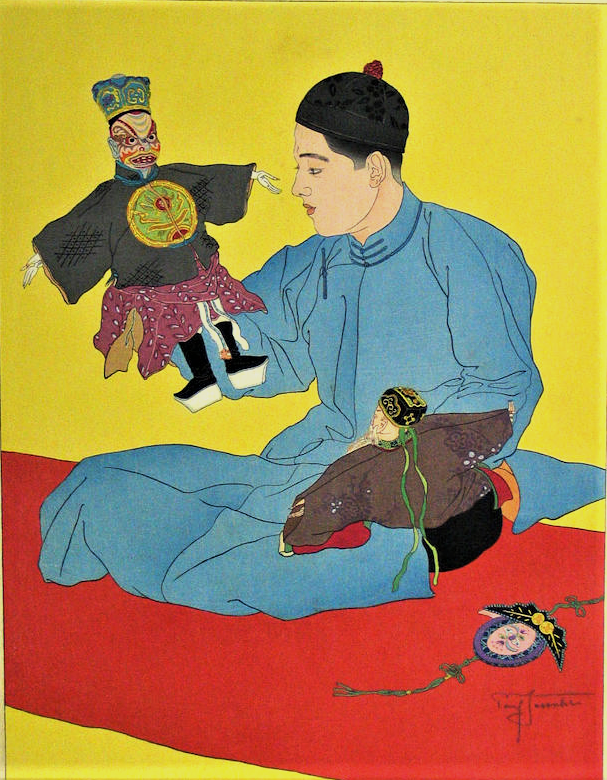

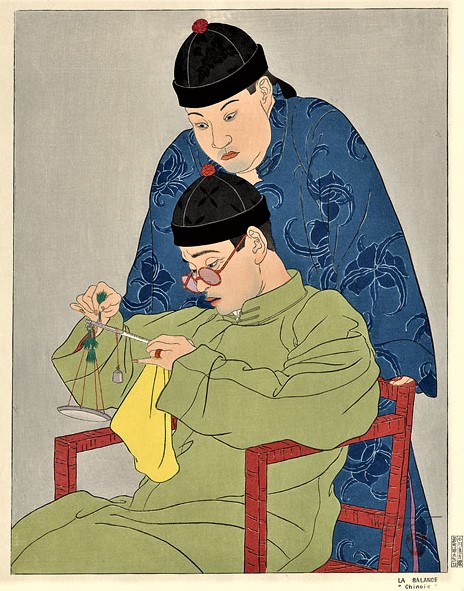
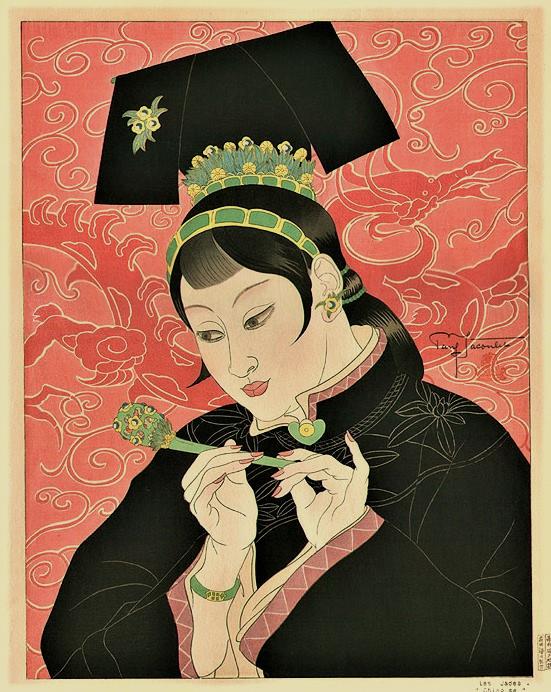
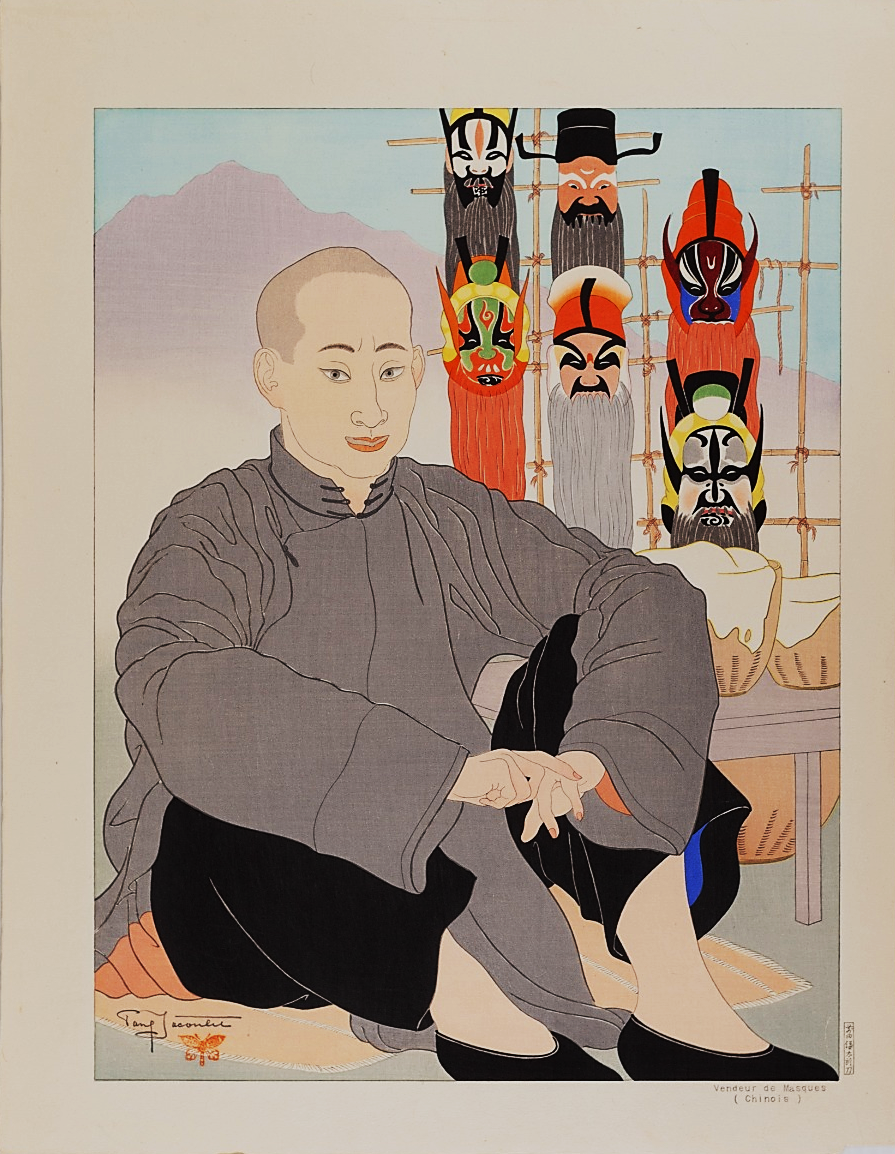
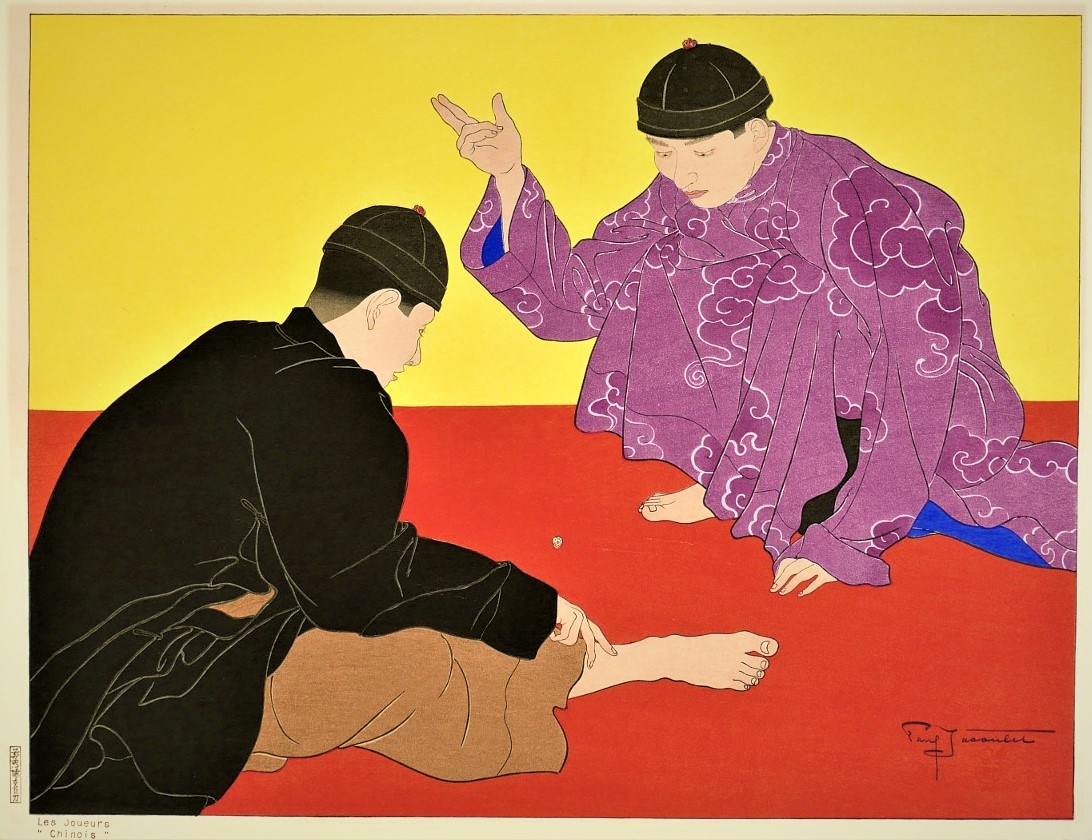
The Manchurian Princesses "Bat" Series
In 1940, Paul Jacoulet was in full possession of his creative talents. Since his first prints in 1934, he has acquired a total mastery of the techniques of wood engraving. He then undertook a series devoted to the Manchurian Princesses with the desire to achieve a degree of perfection and sophistication rarely achieved by the best Japanese artists. He also benefited fully from the collaboration of the engraver Kentaro Maeda and of the printer Shunosuke Fujii. This series is also called the "Bat" series after the sigil that appears on each of the five prints, which means "good luck".
The realization has been particularly difficult : Jacoulet was deeply affected by the death of his mother in Seoul in October 1940. Very close ties had united them since his childhood and he was particularly grateful to her for the permanent help that she had provided him and which enabled him to devote himself fully to his vocation as an artist. It is to her that he dedicated this series. In addition, from December 1941, the war between Japan and the United States greatly disrupted the lives of foreigners in Tokyo and Jacoulet was aware that he would soon no longer have the possibility of continuing his work. Its objective was however achieved on April 15, 1942 with the publication of this emblematic series.
